At the end of last year, during a pilot study using a remotely operated vehicle (ROV) to explore seamounts in in the Galapagos Marine Reserve, we discovered a kelp forest! In this article, we share more details about the day of discovery and about kelp in the Galapagos.
What was meant to be our final day in the field exploring seamounts with VideoRay's ROV, was by far the most exciting one (and not the last, read on!). Located near Santa Cruz Island, Bajo San Luis was the last seamount on our list, and finding it wasn’t easy, due to our low-res coordinates, and the fact that our depth gage had stopping working.
But luck seemed to be on our side -- after some back and forth about whether we should lower the ROV to look for the summit, we launched it and saw the seamount directly below us at a depth of around 50m. As the ROV gradually approached what appeared to be a flathead table-top summit, we stared at the screen in bewilderment as we began to make out tall, brown-green algae waving at us in the swell. It was clear that the algae couldn’t be anything other than KELP!
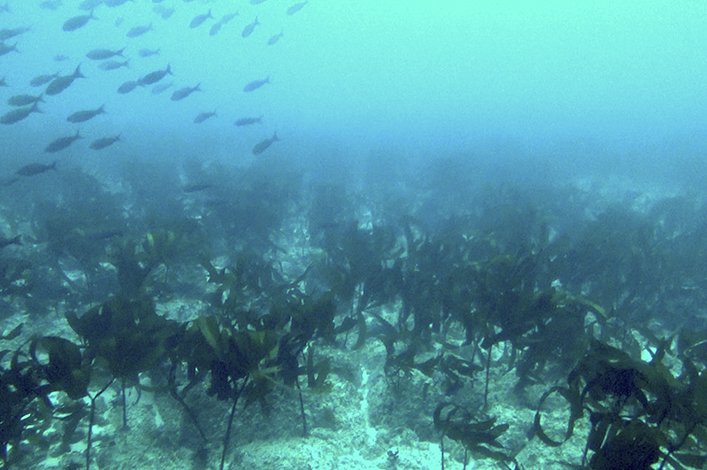
Kelp are generally understood to be ecosystem engineers that create underwater forests in temperate regions. Like coral reefs and mangroves, kelp forests are important ecosystems, as they support a large number of flora and fauna seeking shelter, feeding, breeding and nursery grounds1. Kelp forests are found in shallow, nutrient-rich, clear water below 20°C, where enough light can reach. Therefore, finding them here in the tropical part of the world is like finding a polar bear in Miami!
Isolated Eastern Tropical Pacific, the Galapagos Islands sit in the middle of a confluence of various warm and also very cold ocean currents. As a result, it is one of the only places in the tropics where you find penguins, sea lions and kelp. However, only one species of kelp has hitherto been recorded in the Galapagos. This endemic kelp species, called Eisenia galapagensis2 is rare and endangered, and found mostly in the cold and nutrient-rich waters that predominate in the west of the archipelago3.
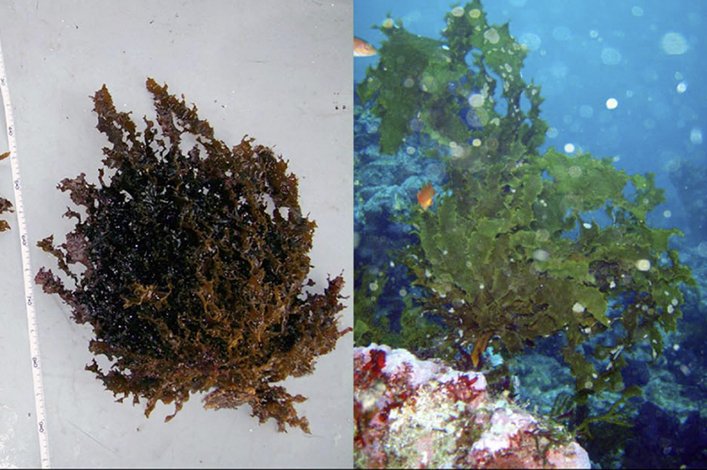
So finding a kelp stand at a depth of 50-70m in the central region of the Galapagos was thrilling and puzzling. While observing the kelp forest in more detail on the ROV video, we came to the surprising realization that the kelp looked very different from E. galapagensis, and that we had possibly discovered something new! To find out, we embarked on one final mission the following day: to try to collect kelp specimens to be able to analyze them in greater detail. After installing a robotic claw on the Pro5 ROV, and much skillful maneuvering, we successfully managed to grab a couple of kelp plants by their stipe or “stem”, and brought them up. For the morphological assessment of the samples collected, we had the support of marine botanists María Altamirano and Julio De La Rosa, from Spain, who at the time were conducting research in Galapagos.
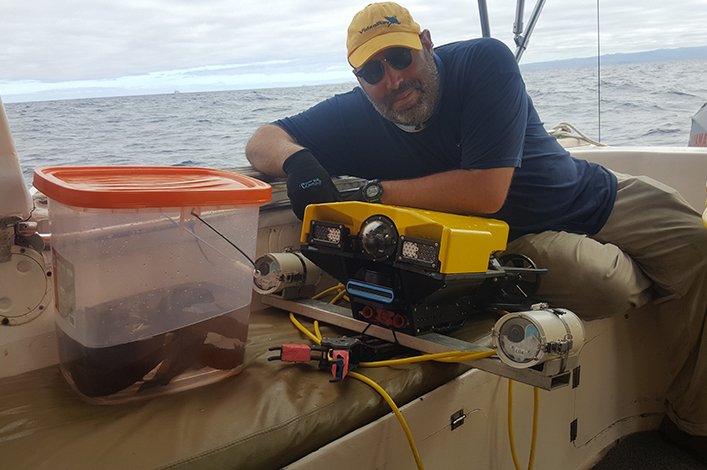
“The results of the analysis of these specimens suggest that it is likely that we have a new species record for the Galapagos, and who knows, maybe also for science, which is fascinating, considering the ecological importance of kelp globally” said Dr. Maria Altamirano, professor of marine botany at the University of Malaga, while clarifying that genetic studies are necessary to confirm these claims.
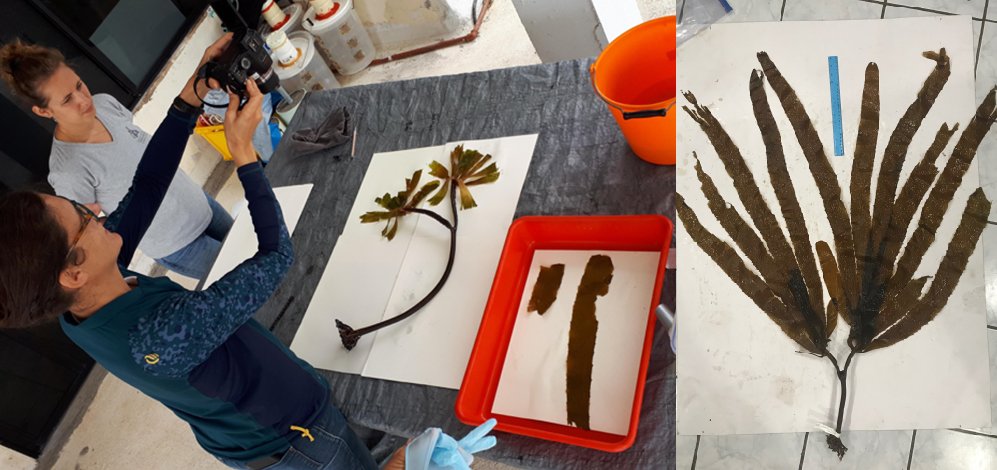
How is it that this kelp, despite forming football fields of macroalgae forest, is only now being found by scientists? One main reason is that they have been missed by divers, as most recreational and scientific scuba diving is rarely done below ~30m.
Why are they living in deep water, where light is substantially lower? It is likely that water is cooler and more nutrient rich at this depth, making it worth while living at the edge of the limits of photosynthesis. These and many other questions are what our team is aiming to investigate further.
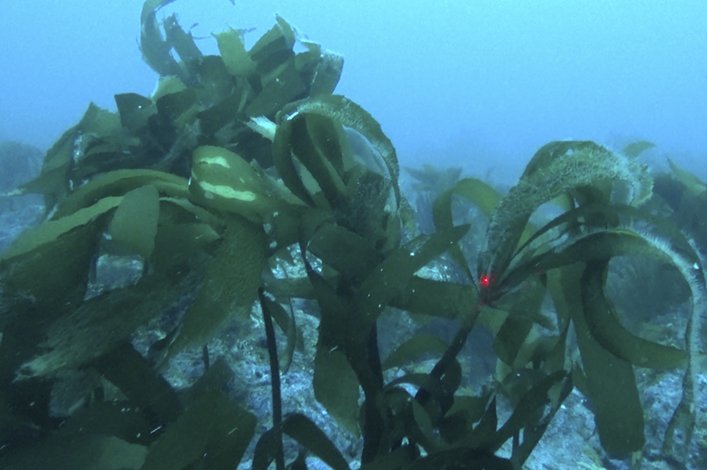
Our next steps will be to do genetic analysis on as many kelp samples as possible to characterize the species. While 50-70m is not super deep, it’s still deep enough to make research at these depths challenging. That’s why we are also working on developing research methods with ROVs in combination with technical diving…more to come soon.
References:
- Marzinelli, E. M. et al. Large-scale geographic variation in distribution and abundance of Australian deep-water kelp forests. PLoS One 10, 1–21 (2015).
- Graham, M. H., Kinlan, B. P., Druehl, L. D., Garske, L. E. & Banks, S. Deep-water kelp refugia as potential hotspots of tropical marine diversity and productivity. (2007). doi:10.1073/pnas.0704778104
- Tompkins, P. & Wolff, M. Galápagos macroalgae : A review of the state of ecological knowledge. 65, 375–392 (2017).





